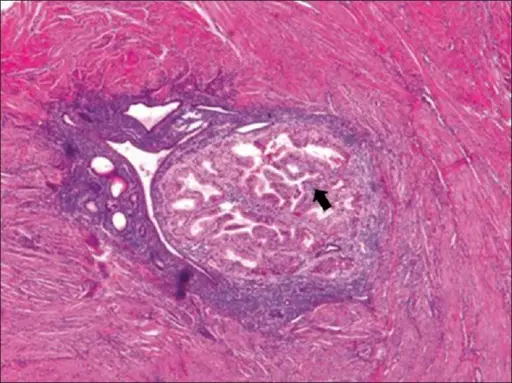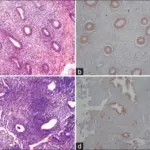Adenomyosis is occurred when the tissue that normally lines the uterus endometrial tissue grows into the muscular wall of the uterus. The displaced tissue continues to act normally thickening, breaking down and bleeding, during each menstrual cycle.
What is the Pathology of Adenomyosis?
The pathology of adenomyosis is:
-Etiology: The cause of adenomyosis is unknown. However, it is believed to be estrogen-dependent or hormone-sensitive.
-Genes Involved: CYP1A1 gene, CYP1A2 gene, CYP19 gene
-Pathogenesis: The sequence of events that lead to adenomyosis are poorly understood.
-Morphology: The morphology associated with adenomyosis shows benign condition by a proliferation of endometrial glands and stroma.
-Histology: The histology associated with adenomyosis shows glandular tissue within the smooth muscle of the myometrium.
How does Adenomyosis Present?
Patients with adenomyosis typically females between the ages of 35 and 50 years. The symptoms, features, and clinical findings associated with adenomyosis include: heavy prolonged menstrual bleeding, severe cramping, pelvic pain during menstruation, painful intercourse
How is Adenomyosis Diagnosed?
Adenomyosis is diagnosed by: histologic microscopic examination, hysterectomy, pelvic examination, transvaginal ultrasonography TVUS and magnetic resonance imaging
How is Adenomyosis Treated?
Adenomyosis is treated by anti-inflammatory drugs, hormone medications and surgery to remove uterus.
What is the Prognosis of Adenomyosis?
The prognosis of adenomyosis is good. After menopause, symptoms go away on their own. It is not generally life-threatening.



